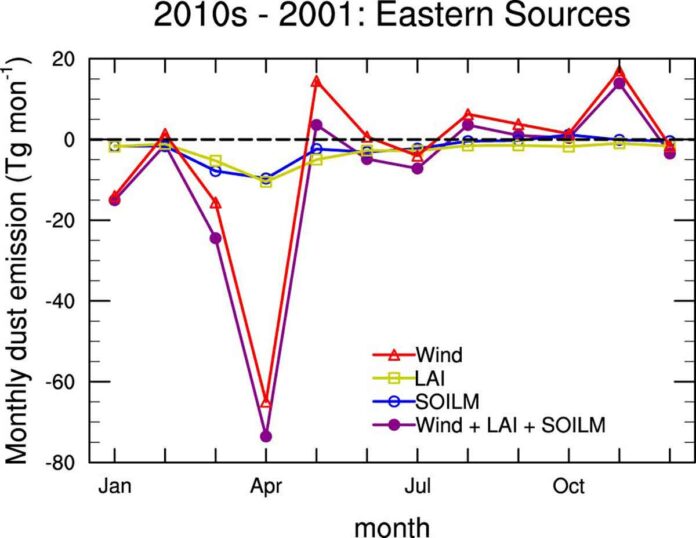Dust storms can last for miles and reach thousands of feet in height. It has a variety of environmental consequences. These consequences include severe air pollution, land degradation, and crop and livestock damage.
Dust influences weather and climate systems through aerosol-radiation-cloud interactions and transporting nutrients from continents to other continents and oceans.
A team led by Dr. Wu Chenglai of the Chinese Academy of Sciences’ Institute of Atmospheric Physics recently investigated the factors driving the recent decline in East Asian dust activity.
The findings were published in the journal Nature Communications.
East Asian dust activity has significantly decreased in recent decades. There is a significant decrease in dust activity following the dusty period of 2000-2002. What are the causes of the recent decrease in East Asian dust activity? What will happen to dust activity in the future?
“Dust emission is affected by a variety of factors. Factors such as surface winds, soil conditions, vegetation cover, and human disturbances,” said co-corresponding author Prof. Lin Zhaohui.
The study’s most important component was the use of a physically-based dust emission model (DuEM) to reconstruct the dust emission flux from 2001 to 2017. The model accurately reproduced the interannual variations and decreasing trends in East Asian dust activity from 2001 to 2017.
The weakening of surface wind can be attributed to reduced meridional temperature gradients caused by global warming’s polar amplification. Internal variability in the climate system, such as the Pacific Decadal Oscillation, can also explain some of the weakening (PDO). In China, increased vegetation cover is closely related to rising CO2 concentrations and temperatures, as well as ecological restoration. Soil wetting can be attributed primarily to an increase in precipitation in the source regions.
This study provides a reliable clue for future dust storm activity prediction. The simulated dust emission data is available at the Science Data Bank repository.

